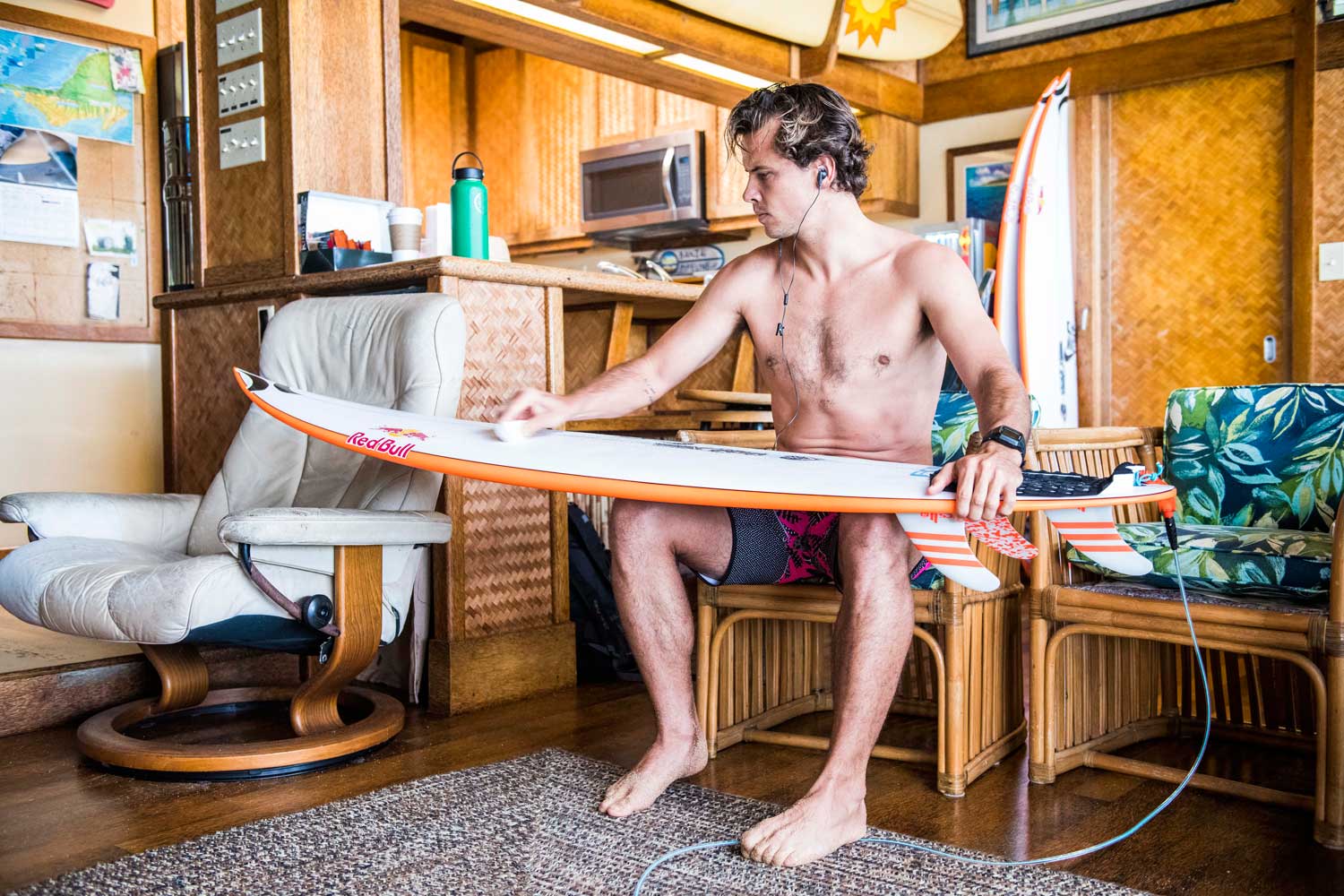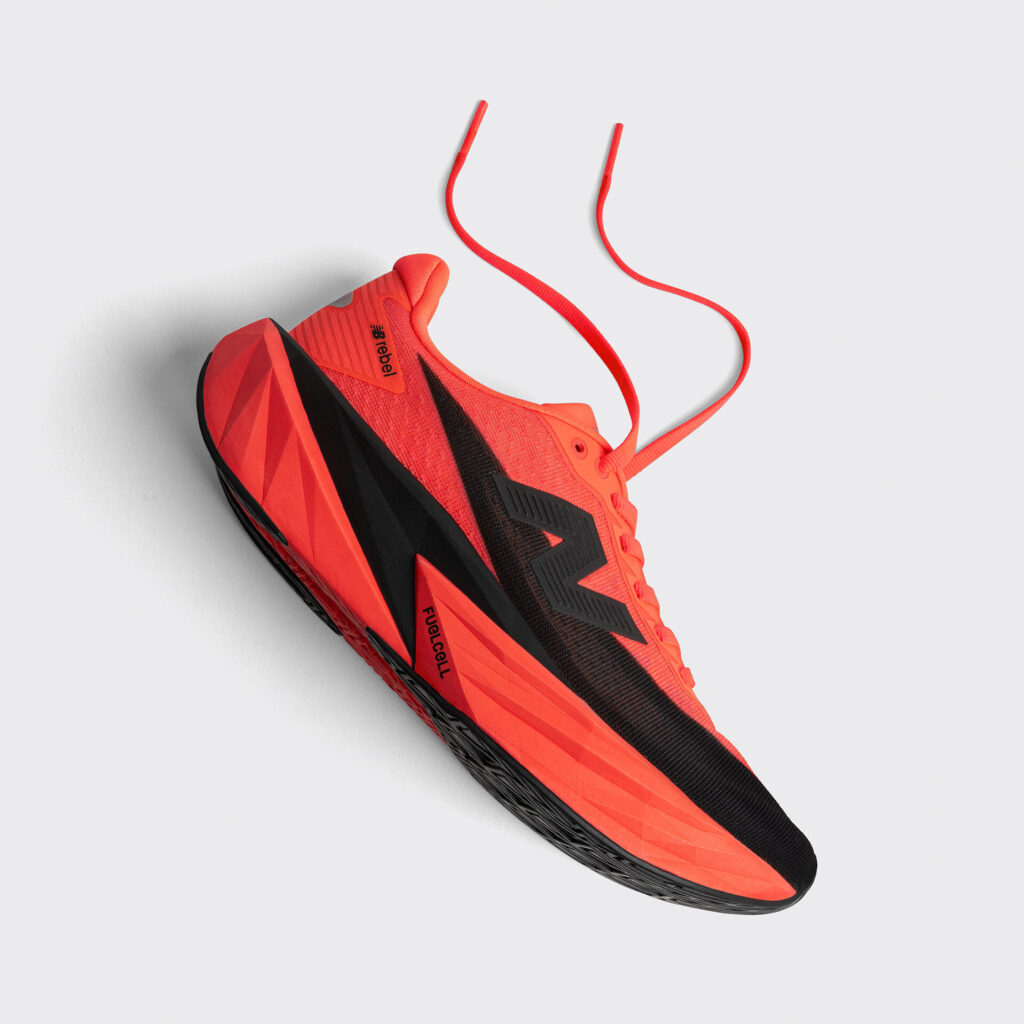
Often, when you’re interviewing a guy and hoping he’ll open up to you, a compliment goes a long way. Hinting that as well as being a hard-nosed journalist you’re also a quiet admirer can have the effect of relaxing him. On this clear-skied morning at Red Bull’s Sydney headquarters, however, it takes me all of 60 seconds to realise that in the case of Julian Wilson, the ol’ fan-with-a-typewriter approach isn’t going to work. Decked out in cap, striped top and jeans, at once friendly and dreamily detached, Wilson gives the impression that he couldn’t be any more relaxed had he just returned from a monthlong meditation in the Himalayas. What’s more, the only thing that appears to disturb his uber-chilled state is any attempt to praise him. Remark on his persistence, say, or his courage – and there are telling examples of both – and Wilson becomes palpably uncomfortable. Chances are you’d get a better reaction grabbing him in an affectionate headlock and calling him a doofus.
Wilson’s unease with praise can be traced to two things. One, he’s modest. And two, he doesn’t need it. “Believe in yourself rather than worrying about someone else having to believe in you,” he says. “That’s the biggest thing for me. Take all the advice and information you can get – that’s great – but at the end of the day you’ve got to believe in yourself to achieve anything.”
The boy who grew up in a tight-knit family of surfers on Queensland’s Sunshine Coast is now 30 and has done great things on many of the world’s most famous breaks, even if outside of the surfing fraternity few could put a name to the handsome face. Perhaps that’s partly because Wilson lacks the outrageous flair of some of the great local pros of yesteryear – Occhilupo, Fanning, Parkinson. Or his relative anonymity might say more about surfing’s profile in an increasingly cluttered sporting marketplace. Whatever the case, Wilson is class: on the brink of the 2019 World Surf League (WSL) season, he’s the second-best surfer on the planet. First stop: defending his title at the Quiksilver Pro at Coolangatta’s Snapper Rocks from April 3-13.
Wilson is backing up from a 2018 season that brought him tantalisingly close to a maiden WSL championship. Clearly, getting pipped by Brazilian Gabriel Medina stung the Australian, who returned from Hawaii nursing a disappointment that ran every bit as deep as his fatigue. But experience tells you that these are the very preconditions for his next triumph. In the past, every major success Wilson has enjoyed has been borne of hardship. Want a lesson in resilience? You’ve come to the right man.
JUMP THE SHARK
Wilson’s most celebrated resurgence followed close mate Mick Fanning’s encounter with a Great White at Jeffreys Bay, South Africa in 2015. Fanning and Wilson were going head-to-head in the final of the J-Bay Open when the beast loomed beside Fanning as he lay prone on his board. Acting on instinct, Fanning punched the shark before using his board as a shield.
“I saw the whole thing,” a teary Wilson told a news conference in the days afterwards. “I saw him get knocked off his board, and then a wave popped up and I thought, ‘He’s gone; he’s gone under’.”
Ever wondered how you’d respond if a mate were fending off a man-eater a short paddle away? For Wilson, there was no internal debate. “I felt like I couldn’t get there quick enough. I was like, ‘I’ve got a board – if I get there I can stab it.’ And then [Mick] started screaming. And I remembered that the boats were there and we both started screaming. I was paddling for him.”
A response team scared off the shark before scooping Fanning and Wilson, both unharmed, out of the water. Organisers promptly cancelled the final. Trauma experts predicted the ordeal could trigger PTSD in both Fanning and Wilson, and many wondered whether either would compete again, at least anytime soon. Yet both were back in the water within weeks. Fanning’s resilience can be sheeted home to his various well-documented struggles, including the untimely deaths of his brothers Sean and Peter. Wilson’s ability to bounce back can likewise be attributed to an unusually close acquaintance with hard times.
KEEP YOUR HEAD ABOVE WATER
Not long before the shark encounter, Wilson and his family were fighting their own battles on land as he dealt with one of his most challenging years on the tour.
“I struggled that year [2014],” remembers Wilson. “I came home from Pipe [the Pipe Masters, Hawaii] and mum had breast cancer for the second time.” That was on top of a prostate cancer diagnosis recently handed to Wilson’s dad, Mick.
“As the year unfolded, my head was at home,” he says. “I was struggling to prioritise what I was doing, and maybe feeling a little selfish. I got to the end of the year and I’d had a rubbish year. I was no good to anybody.”
Heading into the season-ending Pipe Masters, a string of early exits behind him, Wilson needed to produce a career-defining performance to save his spot on tour and avoid having to watch the 2015 season from the beach. True to form, he found his best when the stakes were highest.
“It all came together on the very last wave of that year,” he says. “I won the Triple Crown on that wave and I won the Pipe Masters – and there was about a minute-and-a-half left in the final. That was the biggest win of my career.”
NO PAIN
At the end of 2017, disaster struck again for Wilson, this time in the form of a shoulder injury sustained while mountain-biking in the Glenrock State Conservation Area, near Newcastle in NSW. The ruptured AC joint would plague him during competition for most of the year.
Faced with a choice of surgery or conservative treatment, Wilson opted for the latter, which involved an extensive rehab program aimed at strengthening his shoulder to a point where he could compete.
“Instead of going to the gym, which I couldn’t really do, I focused on breath work, mobility and getting the right techniques so the shoulder wouldn’t break down,” Wilson explains. The other priority was maintaining his aerial confidence and proprioception, both of which can plunge during a period out of the water. “I went back to skateboarding to get my ‘airs’ back,” he says. “It was so nice to reconnect with something that I’d done my whole life, and it opened up my mind and got my confidence back really quick.”
Alas, another challenge was about to hit. Five days out from the first event of the 2018 season – his local Quiksilver Pro – Wilson found himself in hospital when his first daughter, Olivia, arrived four weeks early. The new father had no choice: he continued his rehab on the floor of the maternity ward, and in the process drew inspiration from his wife, model Ashley.
“I was there with her when she was giving birth,” Wilson says. “And after seeing her go through that experience I was like, ‘Well, I can suck it up and just see how things go. Yeah, I’m not 100 per cent. And yeah, the shoulder’s painful and stuff. But it’s good enough to have a go’.” Rising above the discomfort of the injury and a bad case of new-baby sleep deprivation, and having barely surfed for a month, Wilson shocked everyone bar himself by winning his home title. He backed that up last October with victory at the Quiksilver Pro France, cementing his status as Australian sport’s comeback king.
Wilson, who believes passionately in helping the next generation of surfers, mentors a bunch of them. What does he tell them? The same message he delivered to me: stop relying on other people to give you self-confidence. It doesn’t work that way. Instead, push and challenge yourself at every turn. And then give your next project a red-hot go.













